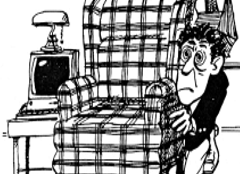PERSONALITY DISORDER - PARANOID TO ANTISOCIAL
1/92
There's no tags or description
Looks like no tags are added yet.
Name | Mastery | Learn | Test | Matching | Spaced |
|---|
No study sessions yet.
93 Terms
PARANOID PERSONALITY DISORDER
is characterized by pervasive mistrust and suspiciousness of others. Clients with this disorder interpret others’ actions as potentially harmful.
transient psychotic symptoms
During periods of stress, they may develop Paranoid personality disorder
Paranoid personality disorder
Generally, they tend to have lifelong problems living and working with others
Paranoid personality disorder
Clients appear aloof and withdrawn and may remain a considerable physical distance from the nurse; they view this as necessary for their protection.
Restricted Affect
what type of affect does Paranoid personality disorder
Paranoid personality disorder
They may have a restricted affect and may be unable to demonstrate warmth or empathic emotional responses
Paranoid personality disorder
Responses may become sarcastic for no apparent reason. The constant mistrust and suspicion that clients feel toward others and the environment distorts thoughts, thought processing, and content.
Paranoid personality disorder
They may spend disproportionate time examining and analyzing the behavior and motives of others to discover hidden and threatening meanings. Clients often feel attacked by others and may devise elaborate plans or fantasies for protection
projection
Paranoid personality disorder use the defense mechanism of, which is blaming other people, institutions, or events for their own difficulties
Paranoid personality disorder
The nurse must remember that these clients take everything seriously and are particularly sensitive to the reactions and motivations of others.
formal, businesslike manner
Paranoid personality disorder nurse must approach these clients in a
refrain social chit-chat or jokes, Being on time, keeping commitments, and being especially straightforward
manner of approach paranoid personality disordered person
paranoid personality disorder
Because these clients need to feel in control, it is important to involve them in formulating their care plan.
validate ideas before taking action
One of the most effective interventions in paranoid personality disorder is helping clients _________however, this requires the ability to trust and listen to one person.
validate ideas before taking action
The rationale for this intervention is that clients can avoid problems if they can refrain from taking action until they have validated their ideas with another person.
This helps prevent clients from acting on paranoid ideas or beliefs. It also assists them to starting to base decisions and actions on reality
SCHIZOID PERSONALITY DISORDER
characterized by a pervasive pattern of detachment from social relationships and a restricted range of emotional expression in interpersonal settings
schizoid personality disorder
People with _____________ avoid treatment as much as they avoid other relationships, unless their life circumstances change significantly.
Constricted Affect
Clients with schizoid personality disorder display a _____affect
schizoid personality disorder
They are aloof and indifferent, appearing emotionally cold, uncaring, or unfeeling. They report no leisure or pleasurable activities because they rarely experience enjoyment
schizoid personality disorder
Even under stress or adverse circumstances, their response appears passive and disinterested. There is marked difficulty experiencing and expressing emotions, particularly anger or aggression
Schizoid personality disorder
Clients do not report feeling distressed about this lack of emotion; it is more distressing to family members
Schizoid personality disorder
Clients usually have a rich and extensive fantasy life, though they may be reluctant to reveal that information to the nurse or anyone else. The ideal relationships that occur in the client’s fantasies are rewarding and gratifying
FALSE NO
Schizoid personality disorder have disordered thought process and content which is evident
Schizoid personality disorder
Clients may be indecisive and lack future goals or direction. They see no need for planning and have no aspirations. They have little opportunity to exercise judgment or decision-making
Schizoid personality disorder
these clients do not see their situation as a problem and fail to understand why their lack of emotion or social involvement troubles others.
Schizoid personality disorder
They are self-absorbed and loners in almost all aspects of daily life. Given an opportunity to engage with other people, they often decline. They are also indifferent to praise or criticism and are relatively unaffected by the emotions or opinions of others.
Schizoid personality disorder
They also experience dissociation from or no bodily or sensory pleasures. For example, the client has little reaction to beautiful scenery, a sunset, or a walk on the beach
Schizoid personality disorder
Clients have a pervasive lack of desire for involvement with others in all aspects of life. They do not have or desire friends, rarely date or marry, and have little or no sexual contact
Improving functioning in the community
what is the focus of nursing intervention for Schizoid personality disorder
Schizoid
clients with ______________disorder would function best in a board and care facility, which provides meals and laundry service but requires little social interaction. Facilities designed to promote socialization through group activities would be less desirable.
FALSE
improving socialization are the priority for Schizoid
case manager
can then help the client obtain services and health care, manage finances, and so on. The client has a greater chance of success if he or she can relate his or her needs to one person (for Schizoid)
Schizotypal disorder
perhaps a distant “cousin” of schizophrenia

Schizotypal PD
what type of personality disorder?
SCHIZOTYPAL PERSONALITY DISORDER
characterized by a pervasive pattern of social and interpersonal deficits marked by acute discomfort with and reduced capacity for close relationships as well as by cognitive or perceptual distortions and behavioral eccentricities
Schizotypal personality disorder
Clients often have an odd appearance that causes others to notice them. They may be unkempt and disheveled, and their clothes are often ill-fitting, do not match, and may be stained or dirty. They may wander aimlessly
Schizotypal personality disorder
Clients often provide unsatisfactory answers to questions and may be unable to specify or to describe information clearly. They frequently use words incorrectly, which makes their speech sound bizarre.
Schizotypal personality disorder
Cognitive distortions include ideas of reference, magical thinking, odd or unfounded beliefs, and a preoccupation with parapsychology, including extrasensory perception and clairvoyance. Ideas of reference usually involve the client’s belief that events have special meaning for him or her; however, these ideas are not firmly fixed and delusional
Schizophrenia
Schizotypal personality disorder can progress or develop to
Schizotypal personality disorder
Clients experience great anxiety around other people, especially those who are unfamiliar. This does not improve with time or repeated exposures; rather, the anxiety may intensify. This results from the belief that strangers cannot be trusted.
Schizotypal personality disorder
Clients cannot respond to normal social cues and hence cannot engage in superficial conversation.
development of self-care
what is the focus of nursing interventions for schizotypal personality disorder?
role-play interactions
clients would have with each of these people; this allows clients to practice making clear and logical requests to obtain services or to conduct personal business.
a list of people in the community
the nurse must help them function in the community with minimal discomfort. It may help to ask clients to prepare
written requests or to use the telephone for business
Because face-to-face contact is more uncomfortable, clients may be able to make
Social skills training
may help clients talk clearly with others and to reduce bizarre conversations. It helps to identify one person with whom clients can discuss unusual or bizarre beliefs, such as a social worker or a family member.
BORDERLINE PERSONALITY DISORDER
unstable interpersonal relationships, self-image, and affect as well as marked impulsivity
splitting
occurs when a person with borderline personality disorder suddenly characterizes people, objects, beliefs, or situations by extremes, such as either all good or all bad
splitting
everything is good or bad BPD
feeling empty
what is the mood of client with BPD
BPD
The pervasive mood is dysphoric, involving unhappiness, restlessness, and malaise. Clients often report intense loneliness, boredom, frustration, and feeling “empty.
BPD
They are usually hypersensitive to others’ emotions, which can easily trigger reactions. Minor changes may precipitate a severe emotional crisis, for example, when an appointment must be changed from one day to the next. Commonly, these clients experience major emotional trauma when their therapists take vacations.
borderline personality disorder BPD Thought Process and Content
periods of wakefulness when they are unaware of their actions). Self-harm behaviors often occur during these dissociative episodes, though, at other times, clients may be fully aware of injuring themselves.
Sensorium and Intellectual Processes BPD
Intellectual capacities are intact, and clients are fully oriented to reality. The exception is transient psychotic symptoms; during such episodes, reports of auditory hallucinations encouraging or demanding self-harm are most common.
posttraumatic stress disorder
this trauma disorder is common to clients with BPD?
borderline personality disorder (BPD
have an extreme fear of abandonment and a history of unstable, insecure attachments
borderline personality disorder (BPD
Clients tend to have an unstable view of themselves that shifts dramatically and suddenly, often from needy and dependent one moment to angry, hostile, and rejecting the next.
borderline personality disorder (BPD
They make decisions impulsively on the basis of emotions rather than facts.
Self-Concept BPD
Clients have an unstable view of themselves that shifts dramatically and suddenly. They may appear needy and dependent one moment and angry, hostile, and rejecting the next.
suicide
BPD are at risk for?
Roles and Relationships BPD
Clients hate being alone, but their erratic, labile, and sometimes dangerous behaviors often isolate them.
extreme fears of abandonment
They engage in many desperate behaviors
Feelings for others are often distorted, erratic, and inappropriate
Promoting clients’ safety
what is the priority nursing intervention for BPD clients?
No-self harm contract
client promises not to engage in self-harm and to report to the nurse when he or she is losing control. This is not a promise to the nurse but the client’s promise to him or herself to be safe
Establishing boundaries
“I’m interested in helping you get better just as the other staff members are.” what type of therapeutic relationship is this for patients who have BPD that often have intense feelings of attachment, dependence, and needy
TRUE
Deflecting attention from the actual physical act is usually desirable.
true
In a clinical setting, this may mean seeing the client for scheduled appointments of a predetermined length rather than whenever the client appears and demands the nurse’s immediate attention
Thought stopping
is a technique to alter the process of negative or self-critical thought patterns, such as “I’m dumb, I’m stupid, I can’t do anything right.” When the thoughts begin, the client may actually say “Stop!” in a loud voice to stop the negative thoughts.
Cognitive restructuring
is a technique useful in changing patterns of thinking by helping clients recognize negative thoughts and feelings and replacing them with positive patterns of thinking.
Positive self-talk
The client then learns to replace recurrent negative thoughts of worthlessness with more positive thinking; the client reframes negative thoughts into positive ones
““I made a mistake, but it’s not the end of the world. Next time, I’ll know what to do.””
Decatastrophizing
is a technique that involves learning to assess situations realistically rather than always assuming a catastrophe will happen. The nurse asks, “So what is the worst thing that could happen?”
structure client’s daily activities
clients with BPD has feelings of chronic boredom and emptiness, fear of abandonment, and intolerance of being alone, often at a loss about how to manage unstructured time, become unhappy and ruminative, and may engage in frantic and desperate behaviors, to decrease this what do you think the client can do?
thought stopping, positive self-task, decatastrophizing
what are the examples of cognitive restructuring?
Borderline personality disorder
what type of personality disorder can be seen in the picture?

Schizoid PD
seem to be missing the “human part”
Paranoid

Schizotypal

Schizoid

Antisocial PD
characterized by a pervasive pattern of disregard for and violation of the rights of others—and by the central characteristics of deceit and manipulation.
Psychopathy, Sociopathy, Dyssocial
other terms for antisocial PD?
LONG-TERM
what is the difference of personality disorder to other disorders?
psychopathy

Callous
lack of empathy
Psychopathy
“human predators” No “consciences”
18 years old
formal diagnosis of antisocial is not made until what age?
Antisocial
coercion, personal profit motivate them, believe that others are also doing the same so he only cares about himself because no one else will. Though process of what disorder?
Antisocial
manipulate and exploit others, purse only for personal gain “After theft, can you believe that is all the money I got?” Kabit, cannot sustain long-term commitments, relationships, leave others abandoned even family (pake ko dyan!) NO GUILT!!!
Limit setting
WHAT IS THE PRIORITY NURSING INTERVENTION FOR ANTISOCIAL?
Limit setting
The nurse must provide structure in the therapeutic relationship, identify acceptable and expected behaviors, and be consistent in those expectations. He or she must minimize attempts by these clients to manipulate and control the relationship. what technique is this?
describe unacceptable behavior
identifying the consequences
identifying the expected or desired behavior
3 steps of limit setting?
Confrontation
The nurse points out a client’s problematic behavior while remaining neutral and matter-of-fact; he or she avoids accusing the client.
limit setting and confrontation
what are the techniques used for promoting responsible behavior to clients with antisocial personality disorder?
Problem-solving skills
skills include identifying the problem, exploring alternative solutions and related consequences, choosing and implementing an alternative, and evaluating the results
Time- out
leaving the area and going to a neutral place to regain internal control is often a helpful strategy. help clients to avoid impulsive reactions and angry outbursts in emotionally charged situations, regain control of emotions, and engage in constructive problem-solving.